India’s Central Bank Hikes Interest Rates By 50 Bps To Fight Off ‘Globalised’ Inflation
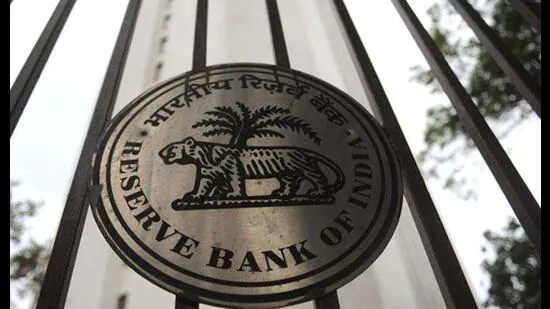
India’s Central Bank Hikes Interest Rates By 50 Bps To Fight Off ‘Globalised’ Inflation
For the second time in a month, the Indian central bank raised interest rates by 50 basis points today. This is larger than the 40-basis-point increase made last month, bringing the central bank’s lending rate to 4.9 per cent.
“The repo rate remains below its pre-pandemic level,” stated Reserve Bank of India (RBI) governor Shaktikanta Das when delivering the announcement.
This measure is part of the Indian government’s and central bank’s protracted war against the country’s rising costs of basics and non-essentials. Consumer price inflation reached 7.8 per cent in April, putting a strain on household finances.
Das claimed that the Russia-Ukraine conflict has resulted in the “globalisation” of inflation. Still, he stopped short of condemning the West for its sanctions regime, which has resulted in price increases in everything from oil to food grains and commodities.
The RBI governor stated that the current year’s inflation prediction is 6.7 per cent.
In response to the RBI’s rate move, the benchmark Nifty50 and Sensex were slightly down. On the other hand, experts believe that the market has already “priced in” the rate hike, implying that the stock markets have already anticipated and accounted for the impact of higher interest rates.
Das sounded relatively upbeat about the rural economy, saying it is “gradually improving” while the urban economy is “recovering.”
He kept India’s GDP forecast for FY23 at 7.2 per cent, which is somewhat lower than the IMF’s 7.5% expectation following its most recent downward adjustment.
Will a rate hike by the RBI help to keep inflation under control?
In a few hours, we’ll know the outcome of the RBI’s Monetary Policy Committee meeting. The MPC is expected to vote to raise benchmark rates due to the high level of inflation. Will a rate hike, though, serve to keep inflation in check? Conditions apply as they say in commercials.
What is the mechanism behind it? Everyone understands that prices are determined by the supply and demand for goods and services in an economy. As a result, a price increase in any particular situation could be due to a rise in demand, a shortage of supply, or both.
The RBI MPC now has only monetary measures at its disposal to curb demand, like increasing the cost of money or restricting its supply.
This increases interest rates, both lending and deposit, for lenders, but with a lag, depending on the situation.
Other monetary instruments in the RBI’s possession include the CRR, a percentage of a commercial bank’s total deposits that must be held with the RBI.
In May, the MPC hiked the repo rate by 40 bps and the CRR by 50 bps in an off-cycle decision. Both of these policies weaken demand in the economy. So, a repo rate and CRR hike should help keep inflation under control, right?
Money supply alone does not affect inflation. The current high inflation is due to supply disruptions caused by the ongoing Russia-Ukraine conflict, which has pushed up commodity prices like oil and fertiliser. This has a knock-on effect on food inflation.
Furthermore, the supply has been curtailed because Ukraine was the world’s largest exporter of sunflower oil before the war.
Seasonal variables have contributed to increased lemons, tomatoes, and wheat inflation. The MPC’s instruments are unable to control this level of inflation. However, some of the inflation is attributable to a resurgence of demand in the economy as it recovers. This demand is reduced by monetary policy, which has a detrimental influence on economic growth. Financial tools prevent inflation in other areas, like food, wages, and rent. In other words, it lowers the economy’s inflationary expectations.
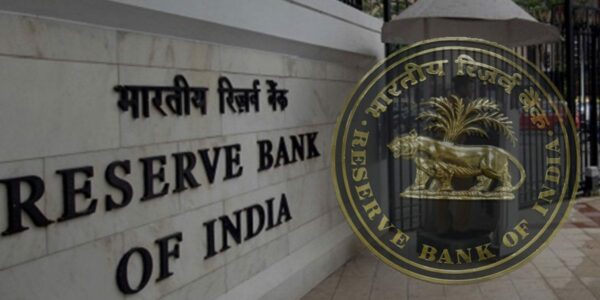
About Central Bank- RBI
The Reserve Bank of India, or RBI, is India’s central bank and regulatory organisation overseeing the country’s financial sector. It is owned by the Government of India’s Ministry of Finance. It is in charge of issuing and distributing the Indian rupee. It oversees the country’s primary payment networks and aims to further its economic growth. Bharatiya Reserve Bank is a central bank in India. Note Mudran is one of the RBI’s specialised departments in charge of printing and minting Indian banknotes and coins.
The RBI formed the National Payments Corporation of India as a specialised division to regulate India’s payment and settlement systems. The Reserve Bank of India started the Deposit Insurance and Credit Guarantee Corporation as one of its specialised divisions to provide deposit insurance and credit guarantee to all Indian banks.
It had complete control of monetary policy in the country until the Monetary Policy Committee was constituted in 2016. In compliance with the RBI Act, 1934, it began operations on April 1, 1935.
The governor, four deputy governours, two finance ministry representatives (usually the Economic Affairs Secretary and the Financial Services Secretary), ten government-nominated directors, and four directors who represent local boards for Mumbai, Kolkata, Chennai, and Delhi make up the RBI’s 21-member central board of directors. These local boards comprise five persons representing regional, cooperative, and indigenous bank interests.
The Asian Clearing Union has accepted it as a member bank. The bank is a leading member of the Alliance for Financial Inclusion, promoting financial inclusion policies (AFI).
On November 12, 2021, India’s Prime Minister, Narendra Modi, announced the intro of two new initiatives to increase investment and provide greater protection for investors.
The RBI Retail Direct Scheme and the Reserve Bank Integrated Ombudsman Scheme are the two new schemes. The RBI Ordinary Direct Scheme allows retail investors to buy government securities quickly and easily. According to the RBI, the initiative will enable individual investors to free open and manage government securities accounts. The RBI Integrated Ombudsman Scheme aims to strengthen the grievance redress mechanism for customers who have complaints against the central bank’s regulated firms. The Reserve Bank of India requires all Indian banks to keep a safe box in their substantial room.
However, the exception is given to the Regional Banks and the SBI branches located in the rural areas, but a substantial room is compulsory.
Repo rate
The repo rate, also known as the benchmark interest rate, is the rate at which the RBI lends money to commercial banks for a short period (a maximum of 90 days).
Borrowing from the RBI becomes more expensive as the repo rate rises. If RBI wants to make borrowing money more expensive for banks, it raises the repo rate; conversely, it lowers the repo rate if it wants to make borrowing money cheaper for banks. When this rate is raised, banks cannot make a profit, and when this rate is reduced, the converse occurs. Repo rates are lowered anytime a country’s banking and economic development is needed.
If banks want to borrow money from RBI for a short period of time, they must pay this interest rate. As collateral, banks must pledge government securities. A repurchase agreement is used in this situation. If a bank wishes to borrow, it must first furnish government securities worth at least $1 billion (perhaps more due to the margin requirement of 5%–10% of the loan amount) and promise to repurchase them for $1.07 billion (US$14 million) after the borrowing period. As a result, the bank has paid interest of $65 million (US$850,000). This is why it’s called a repo rate.
The government securities used as collateral by banks cannot come from the SLR quota (otherwise, the SLR will go below 19.5 per cent of NDTL and attract penalties).
To combat inflation, the RBI increased the repo rate, resulting in higher borrowing costs for banks. Banks will pass on the increased costs to their consumers, increasing the cost of borrowing across the economy. Fewer people will apply for loans, resulting in a reduction in overall demand. Inflation will be reduced as a result. The Reserve Bank of India (RBI) employs the opposite method to combat deflation. When the RBI decreases the repo rate, banks are not required by law to lower their base rates.
At the moment, the repo rate is 4%.
Reverse repo rate
As the name suggests, the reverse repo rate is the opposite of the repo rate. It is a short-term borrowing rate when commercial banks deposit excess funds with the Reserve Bank of India. When the reserve bank believes there is an excess of money in the banking system, it employs this mechanism. The RBI will pay banks a greater interest rate if the reverse repo rate rises. As a result, banks prefer to lend money to RBI, which is always safe, rather than to others (people, corporations, etc.), who are always dangerous.
Statutory liquidity ratio (SLR)
Apart from the CRR, banks must keep liquid assets like gold, cash, and approved securities on hand. Higher liquidity ratios encourage commercial banks to keep a more significant proportion of their assets in liquid form, limiting their ability to provide loans and advances and having an anti-inflationary effect. A higher liquidity ratio causes bank funds to be diverted from loans and advances into government and approved securities.
Central banks in well-developed economies use open market operations, which involve the central bank buying and selling eligible securities in the money market, to influence the volume of cash reserves held by commercial banks and thus the volume of loans and advances they can make to the commercial and industrial sectors. Government securities are traded on the open money market at market-related interest rates. In recent years, the RBI has used open-market operations more frequently.
Bank rate
The bank rate is defined as the “standard rate at which RBI is prepared to acquire or rediscount bills of exchange or other commercial papers eligible for acquisition” in Section 49 of the RBI Act of 1934. The interest rate that the RBI charges banks when they seek to borrow long-term cash from the RBI. The current value is 4.65 per cent.
Liquidity adjustment facility (LAF)
In the year 2000, the liquidity adjustment facility was implemented. The Reserve Bank of India provides scheduled commercial banks the LAF facility to access liquidity in times of need or store excess money with the RBI overnight against the collateral of government securities.
The Reserve Bank of India accepts applications for a minimum of 5 crores (US$660,000) and in multiples of 50 million beyond that.
Cash reserve ratio (CRR)
CRR is the ratio of a bank’s cash reserve holdings with the RBI to the bank’s net demand and time obligations to ensure the scheduled banks’ liquidity and solvency. The percentage of net demand and time obligations that banks must keep in cash at the Reserve Bank of India. CRR has been fixed at 4% by the RBI. A 1% change in CRR has a $137,000 crore impact on the economy. A rise subtracts this amount from the economy, whereas a reduction adds it back in. If a bank has 2 billion NDTL (US$26 million), it must keep 80 million NDTL (US$1.0 million) in cash with the RBI. The RBI does not pay interest on CRR.
Assume the economy is experiencing inflationary trends, and the RBI wishes to keep the situation under control by altering the SLR and CRR. If the RBI raises the SLR to 50% and the CRR to 20%, the bank will only have $600 million (US$7.9 million) to operate with. With such a little amount of capital, the bank will find it challenging to remain profitable. The bank will have no choice except to hike its interest rate, making borrowing more expensive for its consumers. As a result, total demand will be reduced, and prices will fall.
Open market operation (OMO)
The activity of buying and selling government securities in the open market to manage the availability of money in the banking system is called open market operation. When there is an excess of money, the central bank sells government assets, draining the excess liquidity out of the system. When liquidity is scarce, the RBI will purchase its assets and infuse money into the economy.
The Reserve Bank of India would inject Rs 1 trillion (short scale) into the economy on March 23, 2020, through a term repo auction and a major OMOs (open market operations) purchase of government assets. Because COVID-19 outbreak in India, the Reserve Bank keeps a close eye on financial market conditions and the economy’s liquidity situation.
Marginal standing facility (MSF)
This plan was first announced in May 2011, and it is open to all scheduled commercial banks. Banks can borrow up to 2.5 per cent of their net demand and time obligations.
The RBI accepts applications for a minimum of ten million dollars and in multiples of ten million dollars beyond that.
The main distinction from the repo rate is that the bank can use its SLR quota to pledge government assets (up to one per cent). By pledging SLR quota securities under MSF, the bank will not be penalised if SLR falls below 20.5 per cent. The current marginal standing facility rate is 4.25 per cent.
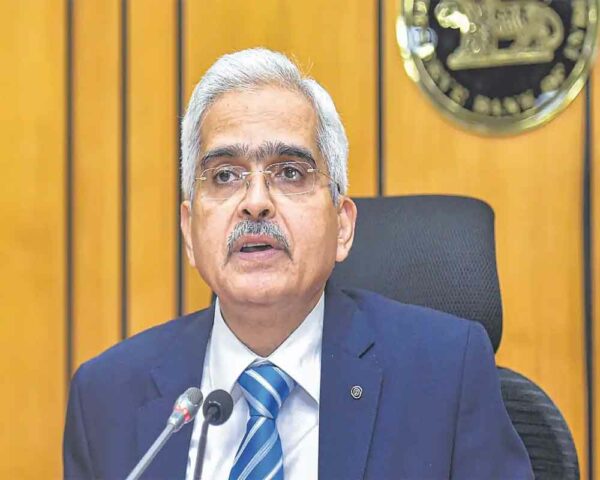
Top 10 points from Governor Shaktikanta Das’ speech on RBI policy
The Monetary Policy Committee, led by RBI Governor Shaktikanta Das, unanimously upped the repo rate, the key policy rate at which the central bank loans short-term liquidity to banks, by 50 bps to 4.90 per cent on June 8.
The latest rate hike follows the Reserve Bank’s announcement of a 40 bps increase in the repo rate in off-cycle policy action.
Policy Statements from the Reserve Bank of India | The top ten highlights from RBI Governor Shaktikanta Das’ speech are as follows:
– The MPC voted unanimously to keep the focus on removing accommodation to keep inflation on track in the future.
– The projection for GDP growth in FY23 has been kept at 7.2 per cent. April-June GDP growth is expected to be 16.2%. From July through September, GDP growth is expected to reach 6.2 per cent. From October through December, GDP growth is expected to reach 4.1 per cent.
– Inflationary expectations for FY23 have been boosted to 6.7 per cent from 5.7 per cent. The RBI inflation projection assumes a regular monsoon and a $105 per barrel crude basket price.
– The RBI will provide adequate liquidity in the banking system while normalising pandemic-related actions.
– The RBI is keeping a close eye on the government securities market. As and when necessary, we will take the required steps.
– The cap on recurring e-payments has been increased from Rs 5,000 to Rs 15,000 to make transactions like subscriptions easier.
– UPI can now be linked to credit cards, starting with RuPay credit cards.
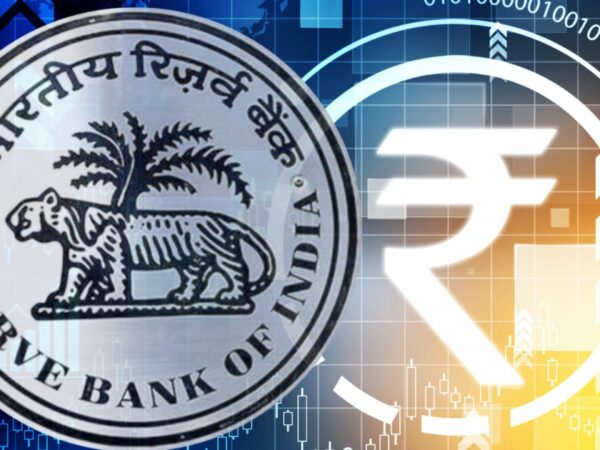
RBI, Govt Taken Steps To Control Inflation; Actions To Have Sobering Impact Soon: Shaktikanta Das
With inflation at an eight-year high of 7.79 per cent, RBI Governor Shaktikanta Das said on Monday that the central bank and government had made several efforts in recent months to restrain price rises in the country. The actions will have a sobering effect on inflation in the future.
“We have gone into another era of concerted action between the fiscal and monetary authorities to manage inflation,” Das said with CNBC-TV18. Over the last two or three months, the RBI has taken several actions… Wheat, other types of intermediaries, raw materials, and the major ones on petrol and diesel have all been targeted by the government… All of this, taken together, will have a depressing effect on inflation in the future.”
“We will give out the numbers at the next MPC scheduled in the first week of June,” he said, adding that “we are on the drawing table rewriting the numbers.”
When asked about a CNBC poll that predicted inflation would not fall below 6% until the fourth quarter of the current fiscal year, he remarked, “October is still a long way off.” Now is not the time to speculate. Other actions could be taken in the interim. I can’t offer you a number right now since we’re still working on it. We can only say what the inflation projection for the future will be in the June MPC.”
According to the RBI governor, professional forecasters’ estimates move in lockstep with the RBI’s, and their numbers are sometimes lower, sometimes higher. “Giving out a number without working on the numbers and in the lead-up to the MPC will not be correct on my part.”
“Interest rates in practically every country today are negative, save Russia and Brazil,” Das remarked from a global perspective. In mature economies, the inflation objective is around 2%. Except for Japan and one other country, all advanced economies have inflation rates above 7%.”
The Russia-Ukraine conflict threw off all central banks’ macro plans. “We assumed oil would be under $100/bbl in February, and the roadmap suggested that inflation would moderate,” Das said.
In April 2022, the Consumer Price Index (CPI)-based inflation rate, which the RBI uses as a benchmark when making monetary policy decisions, reached an eight-year high of 7.79%. It was 4.23 per cent in April 2021 and 6.97 per cent in March 2022. In April, food inflation jumped to 8.38 per cent, up from 7.68 per cent the previous month and 1.96 per cent a year before.
In April, grain and products inflation hit a 21-month high, while vegetables and spices inflation was at a 17-month high. Consumer food price inflation reached an all-time high of 8.38 per cent, a 17-month high.
In April, wholesale price-based inflation reached a new high of 15.08 per cent, owing to increased prices in many sectors, including food and commodities. Inflation based on the WPI was 14.55 per cent in March and 10.74 per cent in April of the last year.
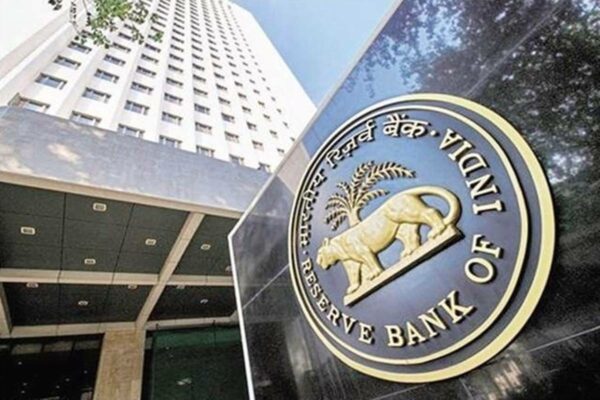
RBI Monetary Policy | MPC failure predicted as FY23 inflation forecast raised to 6.7%
According to quarterly projections, the Reserve Bank of India (RBI) has boosted its inflation forecast for FY23 by 100 basis points to 6.7 per cent, implying that the Monetary Policy Committee (MPC) will fail to meet its mandate.
According to the latest predictions announced on June 8, Consumer Price Index (CPI) inflation will average 7.5 per cent in April-June, 7.4% in July-September, 6.2 per cent in October-December, and 5.8% in the first quarter of 2023, according to the central bank.
The RBI forecasted CPI inflation for April-June at 6.3 per cent, 5.8 per cent for July-September, 5.4 per cent for October-December, and 5.1 per cent for January-March 2023 in April.
According to the most recent inflation predictions, India’s oil basket will cost $105 per barrel.
“Furthermore, the 6.7 per cent baseline inflation prediction for FY23 does not consider the impact of monetary policy actions taken today,” RBI Governor Shaktikanta Das said in a statement on June 8.
The sharply higher inflation forecasts come from a surge in retail inflation to a nearly eight-year high of 7.79% in April.
The RBI expects the MPC to miss its inflation target due to the updated predictions.
When average CPI inflation exceeds the 2-6 per cent tolerance band for three consecutive quarters, the MPC is considered to have failed. ACCORDING TO THE LATEST PREDICTIONS, the MPC would have failed when CPI data for September was announced in October, with CPI inflation averaging 6.3 per cent in the first quarter of 2022.
If the RBI misses its inflation target, it is needed by law to provide a report to the Centre, known as “the letter,” detailing the reasons for the failure, the steps it plans to take to correct the problem, and an estimate of when inflation will return to target.
In May, a source close to the situation warned that, while the RBI appreciated being held accountable for its monetary policy, it may have to use a “sledgehammer + sledgehammer” approach if inflation is brought back to statutory levels in the next six months. If the RBI misses its inflation target, it is required by law to provide a report to the Centre, known as “the letter,” detailing the reasons for the failure, the steps it plans to take to correct the problem, and an estimate of when inflation will return to target.
Edited by Prakriti Arora



